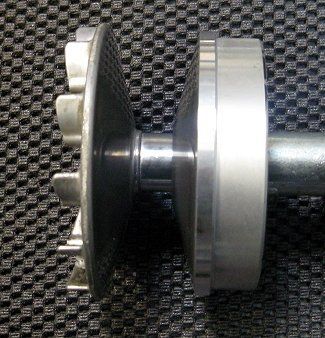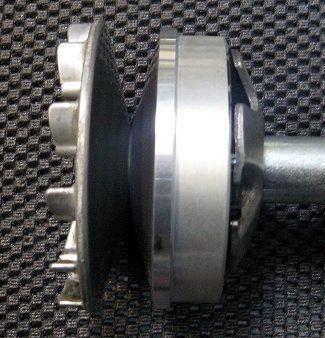Speed Variator Basics
This article is to help you learn what a speed variator is and what it does. To the left you can see a couple of the "speed" variators that we have tested for the Ruckus. Yes, unlike other shops we have tested more variators than you could count. We spend loads of money on R&D at Battlescooter.
It seems like I answer the same questions about the variator all day, every day. It's really what drove me to write another article on drive mods (^_^)
Let's start by listing some myths that are passed as facts every day.
1. "The only difference between variators is the angle of the drive face."







